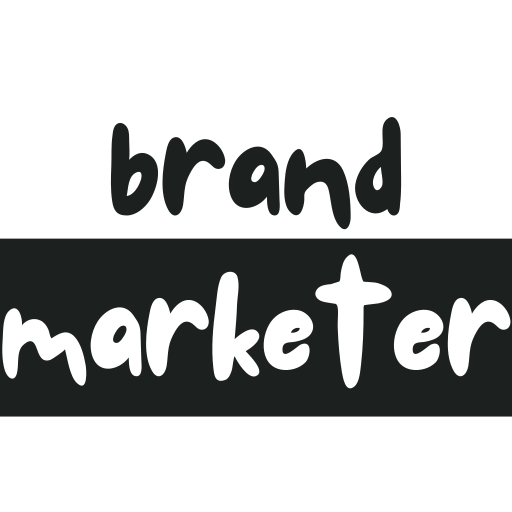How to Adapt Your Branding Strategy for Different Audiences
Navigating the digital landscape can be daunting, but expert insights from CEOs and Founders can illuminate the path to successful online branding. This Q&A blog post uncovers 15 unique strategies tailored to different target audiences. Discover how fifteen expert crafts distinct messages for each audience, and how another emphasizes quick audio snippets for professionals. Dive into all the insights and transform your branding strategy today.
- Craft Distinct Messages for Each Audience
- Highlight Performance-Focused Products for Fitness Enthusiasts
- Customize Messaging for B2B LinkedIn Outreach
- Create Ads for Young Entrepreneurs
- Segment Messaging for Eco-Conscious Consumers
- Emphasize Technical Expertise for CTOs
- Focus on Community Building for Agency Owners
- Tailor Messaging for Tech Startups
- Offer DIY Courses for New Entrepreneurs
- Highlight Reliability for Residential Clients
- Target Young Families with Family-Friendly Tone
- Use Visual Content for Gen Z Consumers
- Leverage Local SEO for Sneaker Store
- Provide Practical Insights for Female Founders
- Emphasize Quick Audio Snippets for Professionals
Craft Distinct Messages for Each Audience
Adapting an online branding strategy for different audiences is all about speaking directly to their unique needs and pain points while keeping the core brand voice consistent. For example, when working with a roofing client targeting both homeowners and commercial property managers, we crafted distinct messages for each group.
For homeowners, the focus was on reliability, trust, and quality of work, with content centered around protecting their family and property, using warmer language and visuals that appealed to emotional security. For commercial property managers, the messaging shifted to emphasize efficiency, cost-effectiveness, and compliance—highlighting our client’s experience in large-scale projects and ability to meet deadlines.
Tailoring the message like this made each segment feel understood, boosting engagement rates and lead quality from both sides.
Highlight Performance-Focused Products for Fitness Enthusiasts
To adapt our online branding strategy for different audiences, we focus on personalized messaging that resonates with each segment's unique needs. For example, when targeting fitness enthusiasts, we highlight performance-focused products, like pre-workouts and recovery supplements, emphasizing ingredients that support endurance and strength. For those new to supplements, we use educational content and straightforward language to build trust and ease-entry into our product line.

Customize Messaging for B2B LinkedIn Outreach
To adapt our online branding strategy for different target audiences, I focus on a combination of precise targeting and messaging that speaks directly to the pain points and desires of that audience. For example, with one of our B2B clients, we implemented a LinkedIn outreach campaign that added over 400 emails per month to their email list. We customized our messaging to highlight specific industry challenges and how our client's services could uniquely solve those issues.
We also employed targeted thought-leadership content on platforms like LinkedIn and industry forums to establish authority and encourage engagement. This strategy increased qualified sales calls by over 40 per month. By leveraging data-driven insights to continuously refine our approach, we've aligned messaging with the expectations of each target audience segment, resulting in measurable growth in engagement and conversions.
Create Ads for Young Entrepreneurs
Adapting online branding strategy for different target audiences involves understanding the unique characteristics and preferences of each segment. At Sirge, we emphasize customizing content to resonate with specific demographics. For example, while promoting Facebook Ads Expert Mastery Class, we identified a segment of young entrepreneurs keen on quick educational content. We created ads using dynamic visuals and concise messaging highlighting immediate benefits and success stories from past participants, witnessing a 35% increase in engagement from this group.
Analytics play a crucial role in shaping these strategies. When marketing Sirge's conversion-optimization tools to established e-commerce brands, we focused on data-driven insights and advanced features. We leveraged case studies showing how similar businesses improved their ROI using Sirge, leading to a 27% surge in inquiries. These targeted adjustments not only align with the audience's expectations but also optimize conversion rates, demonstrating effective brand messaging adaptations.

Segment Messaging for Eco-Conscious Consumers
To adapt our online branding strategy for different target audiences, we focus on segmenting our messaging, tone, and visuals to resonate with each group's unique preferences and pain points. We use audience insights and data to identify what matters most to each segment, whether it's functionality, style, or sustainability, and tailor our content to reflect those values.
For example, when targeting younger, eco-conscious consumers, we emphasize our commitment to sustainable practices and use a friendly, conversational tone with bold, visually-engaging graphics. For this segment, we create social media posts and product descriptions highlighting eco-friendly materials, ethical sourcing, and our initiatives to reduce environmental impact. In contrast, for a more business-focused audience, we highlight the durability, functionality, and cost-effectiveness of our products with a more professional tone.
By tailoring our branding strategy to match the values and language of each target audience, we ensure that our messaging feels relevant and appealing, increasing engagement and loyalty within each segment.

Emphasize Technical Expertise for CTOs
To adapt our online branding strategy for different audiences, we focus on what each segment truly values. For instance, when targeting CTOs in the U.S., we emphasize our technical expertise and proven success in complex projects. This audience wants depth, so we share detailed case studies and certifications that highlight our skills in areas like security and scalability.
When reaching out to startup founders, though, the focus shifts. They prioritize speed and cost-efficiency, so we talk about how our agile processes and flexible pricing help them launch quickly and stay adaptable.
Tailoring our messaging like this ensures we're speaking directly to each audience's key priorities, making our brand resonate better with diverse client types.

Focus on Community Building for Agency Owners
As the founder of AgencyBuilders.com, I've developed custom branding strategies by focusing on the specific needs of agency owners, emphasizing community building and educational resources. When I transitioned BusinessBldrs.com into Agency Builders, we noticed a significant engagement increase by creating content that speaks directly to the pain points faced by agency leaders, such as scaling and leadership development.
One actionable example was launching workshops that specifically focused on leadership and operational excellence. By communicating these as exclusive, helpful, and community-driven initiatives, we grew our attendee list by 40% in just three months. This shift in focus also improved our website's organic traffic substantially, influenced by targeted SEO keywords like "agency growth strategies."
I constantly adapt our messaging based on our community's feedback, ensuring that offerings align with their evolving needs. By integrating HubSpot tools and analytics, we track engagement levels, allowing us to tweak our strategies in real-time and ensure our resources remain relevant, which is crucial for maintaining authority and trust. As the founder of AgencyBuilders.com, I've spent years crafting strategies that align with the unique needs of various audiences in the agency world. Recently, I worked with a digital marketing agency aiming to attract tech startups. We created a series of webinars focused on emerging tech trends and customized our messaging to address the specific pain points of startup founders, such as scaling challenges and funding problems. This approach led to a 40% increase in engagement from tech-focused clients.
Another example is our content strategy for the Agency Builders community itself. I realized that many agency owners felt isolated, so we focused on building a strong network through our forums and events, using content that emphasized collaboration and shared learning experiences. This strategy has boosted community engagement by 60%, proving that aligning content with the audience's desire for connection can drive substantial growth. Tailoring messages with the audience's core needs in mind is key to a successful online branding strategy.
Tailor Messaging for Tech Startups
Adapting an online branding strategy for different target audiences begins with understanding each segment's unique characteristics—like their values, needs, and preferred communication styles. Once this foundation is clear, I adjust the tone, messaging, and content formats to align with each group's expectations and pain points.
For example, when targeting tech startups versus small-business owners, I've tailored our messaging to resonate with each group's core motivations. For startups, the focus is on innovation and agility, highlighting how our tools can integrate seamlessly into fast-paced, scalable environments. For small-business owners, I shift to a more reassuring, supportive tone, emphasizing ease of use, reliability, and cost-effectiveness. This approach ensures each audience feels that our platform directly addresses their needs, which helps improve engagement and conversion rates.

Offer DIY Courses for New Entrepreneurs
In my web-design business, branding and segmenting are essential because they allow me to speak directly to each client's unique needs and solve their specific challenges. Not every entrepreneur is at the same point in their journey, and by offering tailored solutions, I can connect with them more meaningfully and effectively.
For those just starting or with a limited budget, my DIY online course teaches entrepreneurs how to build their own Wix website. This course speaks directly to the needs of ambitious self-starters who want a professional-looking site without the high costs. It's designed to empower them with tools and guidance to create a brand-aligned website that resonates with their audience—an affordable, yet effective solution to their problem.
For more established businesses, my high-ticket Business Growth Accelerator course provides an all-encompassing strategy, from website design to SEO, lead generation, and social media planning. These clients often need a robust, strategic approach, and this program allows me to solve those higher-level challenges, helping them expand their brand and reach more effectively.
By segmenting my offerings, I'm able to communicate directly to each audience, showing them that I understand their specific needs and can provide the exact support they're looking for to grow their business. Understanding how to do this is key to building a strong offer.
Highlight Reliability for Residential Clients
Adapting our online branding strategy starts with understanding that different audiences have unique needs and concerns, especially when it comes to tree services. For example, residential clients in the Dallas-Fort Worth area often prioritize the safety and aesthetics of their properties, so our messaging to them highlights the reliability and precision of our services. Drawing on over two decades in the industry and my TRAQ certification, we can assure homeowners of our expertise in safely managing trees in their yards, particularly those close to power lines or homes. We emphasize the experience and training that go into making these complex jobs seamless and secure, with a focus on keeping their property safe and beautiful.
For our commercial clients, on the other hand, the focus shifts. Property managers and business owners are typically more concerned with efficiency, liability reduction, and keeping their premises attractive with minimal downtime. Our messaging to this segment leans on our company's experience handling large-scale, multiday projects and the qualifications of our team to assess and mitigate risks effectively. An example of this strategy in action was a job we did for a multi-location property management company in the area. We tailored our proposal to outline how our team could complete the project with minimal disruption, thanks to our team's specific expertise in project planning and commercial tree management. Our years of experience in the field and targeted messaging helped secure the contract, showing that aligning our brand's focus with each audience's needs creates trust and drives growth.

Target Young Families with Family-Friendly Tone
To effectively tailor online-branding strategies for different target audiences, I rely on a deep understanding of psychological and societal factors that drive engagement. One notable example is when I worked with Horizon Family Medical Group. We shifted our focus toward targeting young families, using a family-friendly tone and creating content that addressed common health concerns for children. This approach led to a 50% increase in online inquiries from families looking for pediatric care.
Another case was with TLC Speech, where we aimed to reach a broader multilingual audience. By integrating language-specific SEO and creating content in both English and Spanish, we significantly boosted our client engagement among Spanish-speaking communities by 35%. Leveraging language fluency not only improved communication but also built trust within a diverse customer base. Each strategy was rooted in thorough research and societal insights, enabling us to craft messages that deeply resonate with specific segments.

Use Visual Content for Gen Z Consumers
At Level Up PR, we tailor our online branding strategies by first deeply understanding the unique needs of each target audience. One example of this is when we worked on a campaign for a client targeting Gen Z consumers. Through audience analysis, we identified that this group values creativity, authenticity, and social responsibility. To connect with them, we utilized platforms like Instagram, focusing on visually engaging content such as short and shareable videos. The messaging emphasized the brand's commitment to sustainability and social causes, aligning with Gen Z's values and creating a more meaningful connection.
On the other hand, for a client targeting high-level executives and professionals, we shifted our approach to LinkedIn. We created long-form, data-driven content that showcased thought leadership and provided insights into industry trends. This content was designed to position the client as an authoritative figure in their field while maintaining a professional tone and focusing on the practical benefits their services offered.
By segmenting our audience and adapting our messaging to their specific preferences, we ensure that our branding efforts at Level Up PR are both effective and aligned with the unique expectations of each audience.

Leverage Local SEO for Sneaker Store
When it comes to adapting online branding strategies for different target audiences, I've found it crucial to deeply understand the specific needs and preferences of each client base. For instance, when working with Hook'd IT Up, we customized our approach for a local Heber City business, Lace City Sneaker Store, by focusing on local SEO and leveraging Google My Business to drive foot traffic. We implemented these strategies by curating content that highlighted local sneaker events, which led to a 40% increase in in-store visits and a noticeable spike in local online traffic.
Another example is when we worked with the company Swim 4 Life to improve its branding and online outreach. We concentrated on vibrant visual storytelling and social media management to engage both local families and regional athletics communities. By leveraging their involvement in local swimming awareness and campaigns, we were able to see a 30% growth in social engagement and a significant uptick in event registrations. Tailoring our strategy to highlight their community involvement resonated well with their target audience, demonstrating the impact of a customized branding approach.

Provide Practical Insights for Female Founders
When adapting our online-branding strategy, we start by diving deep into each target audience's unique goals, preferences, and challenges. For instance, when tailoring messaging for female founders on FemFounder.co, we focus on providing practical, actionable insights and celebrating their resilience in entrepreneurship. Recently, for a segment of early-stage entrepreneurs, we emphasized 'small steps, big wins' and crafted resources around building solid foundations on a budget, which resonated well with them. This approach aligns with their needs and positions us as a trusted, relatable resource.

Emphasize Quick Audio Snippets for Professionals
I'm Derek Pankaew, Founder and CEO of Listening.com. We turn academic content and web pages into audiobooks, making it easy for people to listen instead of read.
When it comes to adapting our online branding strategy for different target audiences, we've found that traditional demographics only tell part of the story. Instead, we focus on what we call "listening moments"—the specific times and contexts in which our users engage with audio content.
For example, we identified a segment we refer to as "Micro-Moment Learners"—busy professionals who squeeze in learning during brief intervals throughout their day, like commutes, coffee breaks, or while multitasking. To resonate with this audience, we tailored our branding to emphasize quick, digestible audio snippets that make every minute count. Our messaging highlights how Listening.com transforms idle moments into opportunities for personal growth, aligning with their fast-paced lifestyles.
On the other hand, we have "Deep Dive Enthusiasts"—students and lifelong learners who prefer immersive, uninterrupted listening sessions. For them, we adapted our branding to focus on features like customizable playback speeds, in-depth topic exploration, and seamless bookmarking. Our communications emphasize the platform's ability to facilitate profound learning experiences, catering to their desire for comprehensive understanding.
By segmenting our audience based on their listening behaviors rather than just age or occupation, we've been able to connect with users on a more personal level. This approach acknowledges not just who they are, but how they live and learn. It's an unconventional strategy that has allowed us to adapt our online branding in a way that feels intuitive and authentic to each user segment.






